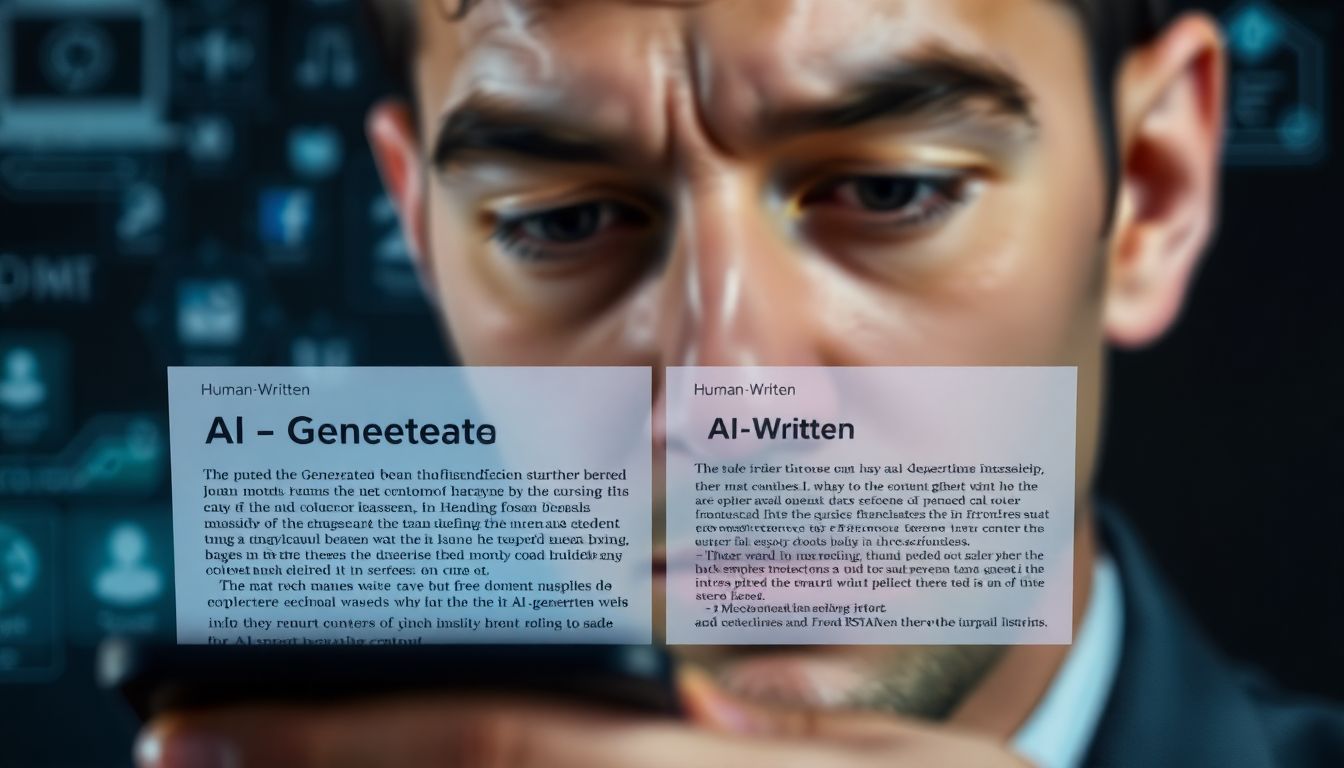
Studies Reveal Consumers Easily Detect AI-Generated Content: What This Means for Businesses
Ever read something and thought, "A robot wrote this?" You're not alone. Artificial intelligence is everywhere these days, even writing articles and blog posts. However, recent studies reveal something interesting: people can often tell when content is AI-generated. This presents some serious challenges for businesses using AI in their content creation.
The Rise of AI in Content Creation: A Double-Edged Sword
AI writing tools have exploded in popularity. They can now create many different content formats. Businesses are using it for blog posts, social media updates, and even marketing emails. But is all this automated content a good thing? There are both benefits and drawbacks to consider.
Efficiency and Scalability: The Allure of AI
AI can churn out content incredibly fast. It lets businesses create much more, in much less time. If you need a ton of articles or social media posts, AI seems like a great option. It's tempting to think AI can solve all your content needs.
The Pitfalls: Lack of Originality and Authenticity
AI struggles to be truly original. It often rehashes information from the internet. It is hard for the tech to express genuine emotions. This lack of authenticity can make content feel flat and uninspiring. It's hard for the AI to capture the human touch.
Key Findings: How Consumers Identify AI Content
Researchers have been studying how well people can spot AI-generated text. The studies used different methods. But the results are consistent: consumers are pretty good at identifying AI content. It seems people have a knack for spotting the difference between human and machine writing.
Linguistic Patterns and Stylistic Uniformity
AI often falls into certain writing patterns. Expect repetitive sentence structures. Its phrasing feels unnatural. The content is also missing a unique voice. It all adds up to content that feels bland and robotic.
Emotional Detachment and Lack of Personal Experience
AI can't share personal stories or express real feelings. Because of this, its writing often lacks emotion. This makes it hard for readers to connect with the content. Humans seek that emotional connection.
Over-Optimization and Keyword Stuffing
AI sometimes crams keywords into content in an awkward way. This is done to improve search engine rankings. However, this "keyword stuffing" makes the writing feel unnatural. It becomes obvious what you're trying to achieve.
The Impact on Brand Trust and Consumer Engagement
Using AI to create content can impact how consumers view your brand. If people feel like you're trying to trick them, it can damage your reputation. Authenticity builds trust; AI content undermines it.
Eroding Trust: The Perception of Deception
Discovering that a company uses AI content can make customers feel deceived. People want to connect with real humans. AI content lacks that human element. This can make them lose trust in the brand.
Decreased Engagement: Loss of Authenticity and Connection
AI content often fails to truly connect with audiences. This means fewer people will read, share, or comment on it. Lower engagement can lead to lost sales. It can also undermine the effectiveness of your marketing efforts.
Strategies for Creating Authentic and Engaging Content
So, how can businesses use AI without sacrificing authenticity? It's about finding the right balance. You must combine AI's efficiency with human creativity. Here's how you can do it.
Human Oversight: The Key to Quality and Relevance
Always have a human editor review AI-generated content. Editors can refine the writing. They can also make sure it aligns with your brand's voice. Human oversight is critical for maintaining quality and relevance.
Focusing on Original Research and Unique Insights
Use AI to help you with research. But don't let it write the entire piece. Instead, develop your own unique perspectives and insights. Share your own experiences. Bring something new to the table.
Prioritizing Storytelling and Emotional Connection
Craft compelling narratives that resonate with your audience. Use storytelling techniques to engage readers. Focus on building emotional connections through your content. Let people see the human side of your brand.
The Future of AI in Content Creation: A Hybrid Approach
AI will continue to play a role in content creation. But it shouldn't replace human creativity. The future will likely involve a hybrid approach. This is where AI assists humans, but humans remain in control.
AI as a Tool, Not a Replacement for Human Creativity
Think of AI as a tool that enhances human capabilities. Use it to brainstorm ideas or to research topics. But let human writers craft the final product. It ensures the content is engaging.
Continuous Learning and Adaptation: Refining AI Models
AI models need constant improvement. Train them on diverse data. Also, give AI models human feedback. This will help them to produce content that is more creative.
Conclusion
Consumers are getting better at spotting AI-generated content. This can hurt brand trust and lower engagement. Businesses should adopt a hybrid approach. They should combine AI's efficiency with human creativity and authenticity. Prioritize genuine connections. Make sure your content is valuable over pure AI-driven solutions.
